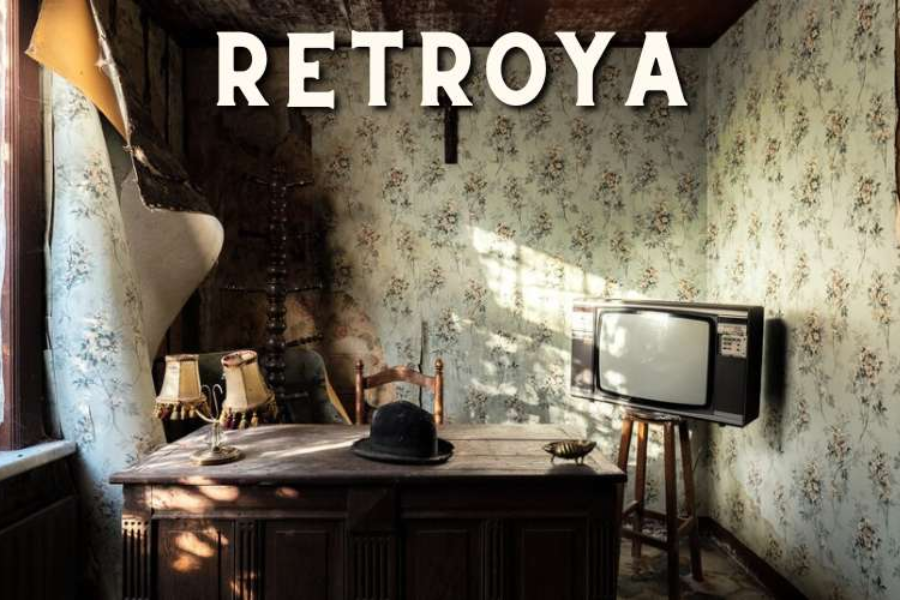Introduction
The peon hat is a symbol that transcends its practical use as a piece of headwear. More than a mere accessory, it represents the hardworking spirit of laborers, particularly those in agricultural settings. With roots in early colonial periods, the peon hat has evolved into a significant cultural artifact, symbolizing resilience and identity in various societies. This article delves into the rich history, cultural significance, modern adaptations, and the artistic interpretations of this timeless piece of headwear.
Historical Origins of the Peon Hat
The peon hat’s origins can be traced back to the Spanish colonization of Latin America, where it emerged as an essential accessory for laborers working in hot, sunny climates.The Spanish word for “laborer” or “farmhand” is the origin of the term “peon,” which refers to people who work in the fields. Initially designed for functionality, the peon hat offered protection from the sun and elements, allowing workers to endure long hours outdoors.
Historically, the design of the peon hat has been functional, often featuring a wide brim and a conical shape. This design was particularly effective for providing shade and protection from the sun’s harsh rays while allowing for ventilation, making it a practical choice for those laboring in agriculture. The hat became an integral part of rural life, symbolizing not just physical labor but also the dignity of work.
You May Also Like To Read : Bankrab Shoe: A Modern Take on Footwear Innovation
The Role of the Peon Hat in Rural Life
Symbol of Identity and Pride
For many communities, particularly in Mexico and Central America, the peon hat embodies a deep connection to the land and traditional agricultural practices. It is often worn during folk dances and celebrations, signifying the pride of the working class and their contributions to society. In these contexts, the hat represents more than just a practical accessory; it is a badge of honor for those who work the land and contribute to the community’s livelihood.
The hat is frequently associated with traditional festivals, where it is worn not only for protection but also as part of cultural attire that celebrates local customs and history. Its presence in celebrations highlights the enduring connection between the people and their agricultural roots, reinforcing the idea that labor is not merely a means of survival but a source of cultural pride.
Cultural Significance
Beyond its association with labor, the peon hat also holds spiritual and cultural significance in various regions. In Vietnam, for instance, the conical shape of the peon hat, often made from palm leaves, is believed to symbolize a connection between heaven and earth. It serves as a protective talisman in traditional rituals, reflecting the cultural beliefs surrounding the hat. This shows how the peon hat transcends mere functionality, intertwining with cultural beliefs and practices.
Moreover, the peon hat has been celebrated in literature and art, further emphasizing its importance as a cultural symbol. In many artistic representations, the hat serves as a visual shorthand for themes related to labor, struggle, and perseverance. It embodies the stories of countless individuals who have worked tirelessly in the fields, representing their dreams, challenges, and triumphs.
Variations of the Peon Hat
While the traditional peon hat is characterized by its broad brim and simple design, several variations exist across cultures that showcase its adaptability and significance.
The Charro Hat
A prominent variant is the charro hat, associated with Mexican horsemen. The charro hat is distinguished by its taller crown and intricate designs, often adorned with elaborate embroidery. This hat represents pride in Mexican equestrian culture and is typically worn during festivals, rodeos, and other cultural events. The charro hat is not only a fashion statement but also a cultural symbol that conveys the heritage and values of the charro tradition.
The Sombrero
The sombrero is another well-known variation that serves a similar purpose. Recognized globally, sombreros range from simple straw designs to more elaborate styles, often embellished with intricate patterns. While both the peon hat and sombrero provide sun protection, the sombrero has gained broader recognition outside of Latin America, often associated with Mexican culture and festivities. The evolution of the sombrero reflects how traditional designs can be adapted and commercialized while still retaining their cultural significance.
Other Regional Variants
In addition to the charro and sombrero, various regions have their own interpretations of the peon hat. The sombrero vueltiao, for instance, is a traditional hat made of woven cane in Colombia.It is characterized by its unique spiral design and is often worn during festive occasions. Each variant serves as a reflection of local customs, materials, and craftsmanship, further highlighting the peon hat’s versatility and cultural richness.
The Peon Hat in Modern Context
Fashion and Trends
In recent years, the peon hat has experienced a remarkable resurgence in the fashion world. Designers are reinterpreting this traditional accessory, incorporating it into contemporary collections that celebrate its cultural heritage. From chic streetwear to high-fashion runways, the peon hat’s unique aesthetic appeals to a new generation of fashion enthusiasts.
Fashion brands have taken inspiration from the peon hat’s design, experimenting with materials, colors, and embellishments to create modern interpretations. While the classic conical shape remains a staple, variations now include sleek leather versions and vibrant printed designs, making it a popular choice for diverse fashion styles.
Cultural Appropriation vs. Appreciation
As the peon hat gains popularity, it raises important discussions about cultural appropriation versus appreciation. It is crucial to recognize the hat’s origins and significance while also honoring the craftsmanship of artisans who create these pieces. Wearing the hat responsibly, with an understanding of its history, fosters appreciation rather than appropriation.
This conversation is vital in the modern fashion landscape, where cultural elements are often commodified without understanding their deeper meanings. By approaching the peon hat with respect and awareness, fashion enthusiasts can celebrate its heritage while supporting the communities that continue to uphold its traditions.
The Peon Hat in Art and Media
The peon hat’s distinctive design has made it a favorite subject in art and media. Artists often depict laborers wearing these hats to highlight themes of resilience and the importance of agricultural labor. This visual representation serves as a reminder of the sacrifices and contributions of those who work the land.
In music, the peon hat is frequently associated with traditional folk songs and mariachi performances, reinforcing its connection to cultural heritage. The hat’s presence in various art forms emphasizes its significance as a cultural symbol, capturing the essence of the working class and their enduring spirit.
Impact on Global Fashion Trends
The peon hat’s influence has transcended geographical boundaries, making it a recognizable symbol in many parts of the world. Its unique design has gained popularity in Western fashion circles, where it is celebrated for its cultural heritage and distinctive aesthetics. The ability of the peon hat to blend seamlessly into contemporary fashion demonstrates its versatility and timeless appeal.
Fashion influencers and celebrities have embraced the peon hat, often incorporating it into their outfits to make a bold statement. This trend reflects a growing appreciation for diverse cultural symbols and an interest in sustainable fashion practices that honor traditional craftsmanship.
You May Also Like To Read : Meagan Pillow Top Sofa Review: Superior Comfort Meets Lasting Quality
Caring for Your Peon Hat
If you own a peon hat or plan to purchase one, proper care is vital to maintain its condition. Here are some essential tips:
Cleaning
- Straw Hats: Use a soft brush to remove dust and dirt. For deeper cleaning, gently wipe the surface with a damp cloth. Avoid submerging straw hats in water to prevent loss of shape.
- Felt Hats: Brush away dirt with a soft-bristled brush. For stains, use a damp cloth with mild soap but be careful not to soak the felt.
Storing
Store your peon hat in a cool, dry place away from direct sunlight. To maintain its shape, consider using a hat box or placing it upside down on a flat surface.
Avoiding Damage
Be mindful of the conditions under which you wear your hat. Avoid exposing it to heavy rain or extreme weather, which could damage the materials. Using a hat band can help secure it against wind while outdoors.
You May Also Like To Read : French Gothic Jewelry: A Timeless Blend of History and Elegance
Conclusion
The peon hat stands as a testament to the rich cultural heritage and resilience of laborers throughout history. From its practical origins as a protective accessory for agricultural workers to its symbolic role in celebrations and artistic representations, the peon hat embodies the dignity of labor and the connection to the land. Its modern resurgence in fashion highlights its adaptability and enduring appeal, prompting important conversations about cultural appreciation versus appropriation. As we embrace the peon hat in contemporary contexts, it is essential to honor its history and the communities that continue to cherish and uphold its significance. Whether worn as a statement piece or celebrated in art, the peon hat remains a powerful symbol of identity, pride, and cultural richness.
FAQs
1. What is a peon hat?
The peon hat is a traditional piece of headwear commonly worn by laborers, particularly in agricultural settings. It typically features a wide brim and a conical shape, providing protection from the sun and elements while symbolizing the dignity of labor.
2. What materials are peon hats made from
Peon hats can be made from various materials, including straw, palm leaves, and felt. The choice of material often depends on regional traditions and climate.
3. How did the peon hat originate?
The peon hat’s origins can be traced back to the Spanish colonization of Latin America. It emerged as an essential accessory for laborers working in hot climates, designed for functionality and protection.
4. What cultural significance does the peon hat hold?
Beyond its practical use, the peon hat symbolizes identity and pride for many communities. It is often worn during folk dances and celebrations, representing the contributions of the working class to society.
5. Are there different styles of peon hats?
Yes, there are several variations of the peon hat, including the charro hat and sombrero. Each style reflects local customs and craftsmanship, showcasing the versatility and cultural richness of the peon hat.
6. How can I care for my peon hat?
To care for your peon hat, clean it gently with a soft brush or damp cloth, store it in a cool, dry place away from sunlight, and avoid exposing it to heavy rain or extreme weather. Using a hat box can help maintain its shape.
7. Can the peon hat be worn in modern fashion?
Absolutely! The peon hat has made a comeback in contemporary fashion, where designers reinterpret its traditional design in stylish and modern ways. Wearing the peon hat can make a bold fashion statement while honoring its cultural significance.
Discover the latest news and updates on LET MAGAZINE!




